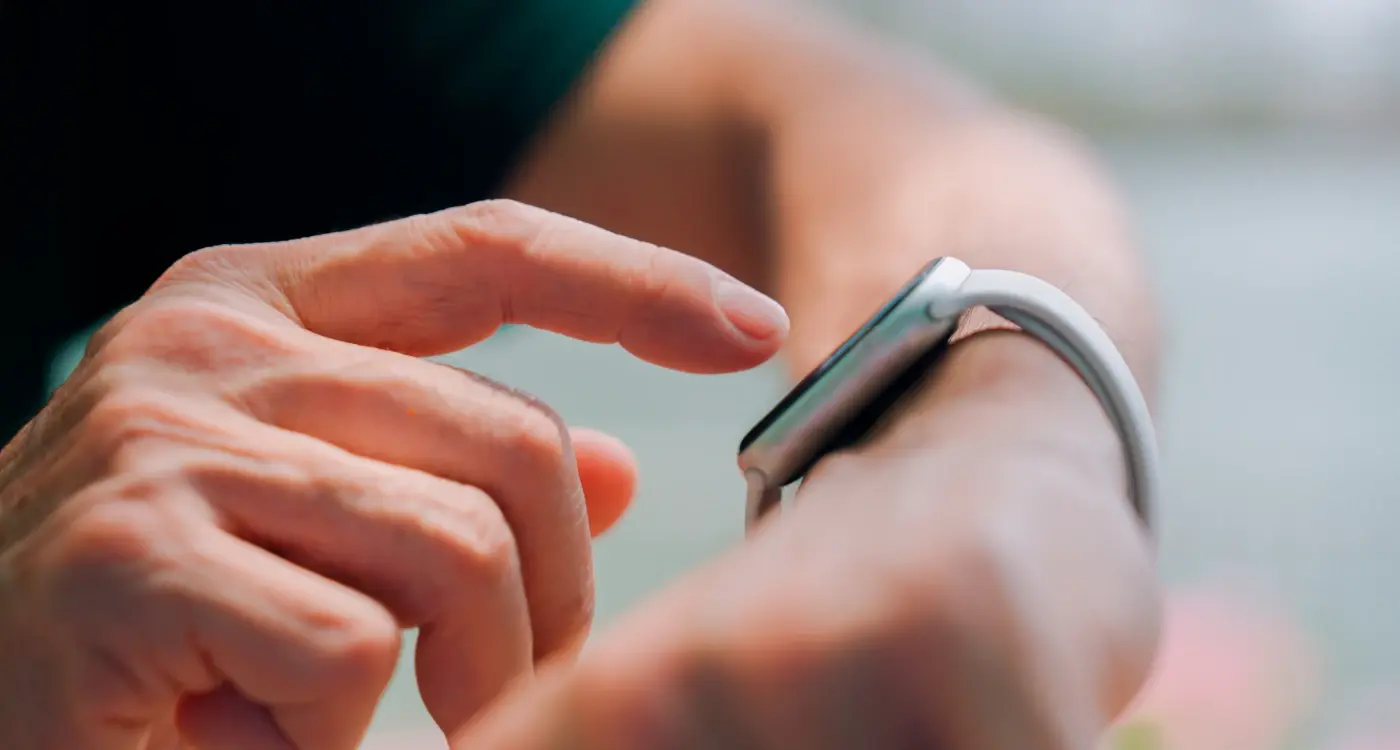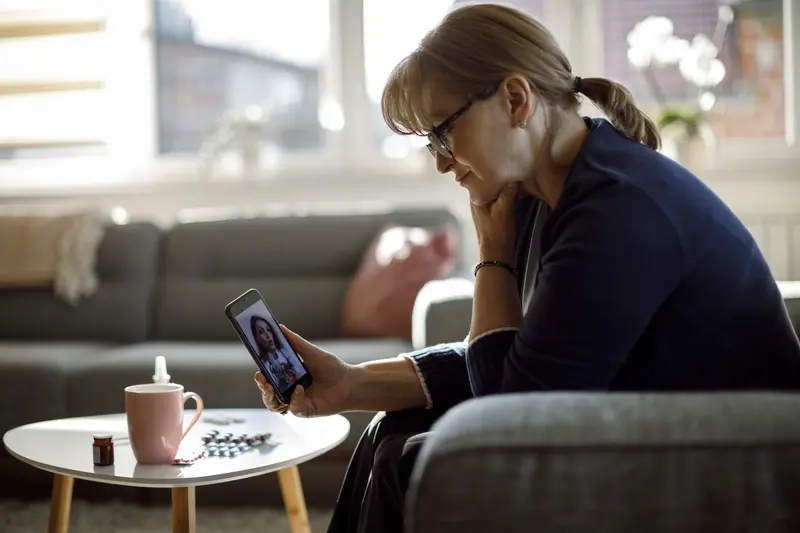Should My Wellness App Integrate With Wearable Devices Like Apple Watch?
Over 80% of fitness app users abandon their wellness apps within six months of downloading them. That's a shocking drop-off rate, and one of the main reasons is that people find it tedious to manually log their health data every single day. Think about it—who wants to remember to input their step count, heart rate, and sleep patterns when they've got a million other things on their mind?
This is where wearable integration comes in. When your wellness app can automatically pull data from devices like Apple Watch, Fitbit, or other IoT health gadgets, it removes that friction entirely. Users get seamless tracking without the hassle, and you get higher engagement rates.
The most successful wellness apps aren't the ones with the flashiest features—they're the ones that make healthy living feel effortless
But here's the thing: adding wearable integration isn't just about connecting to an Apple Watch and calling it a day. There are technical hurdles, cost considerations, and user experience challenges that can make or break your app's success. Some wellness apps have seen their user retention jump by 40% after adding wearable features, while others have struggled with buggy connections and frustrated users. The difference? Understanding exactly what you're getting into before you start building.
What Is Wearable Integration and Why Wellness Apps Are Using It
Wearable integration is when your wellness app connects to devices like smartwatches, fitness trackers, or heart rate monitors. Think of it as creating a bridge between your phone app and the gadgets people wear on their wrists or clip to their clothes. The app can pull data from these devices—steps taken, heart rate, sleep patterns—and use that information to provide better insights or personalised recommendations.
I've worked on dozens of wellness apps over the years, and the shift towards wearable integration has been massive. Users don't want to manually log their workouts or guess how many calories they've burned anymore. They want their Apple Watch or Fitbit to do the heavy lifting whilst they focus on their health goals.
Why Wellness Apps Are Embracing Wearables
The reasons are pretty straightforward when you break them down:
- Real-time data collection without user input
- More accurate tracking than manual logging
- Better user engagement through automatic syncing
- Personalised insights based on actual behaviour
- Competitive advantage over apps without integration
Most wellness apps that ignore wearable integration are missing out on what users actually want. People are already wearing these devices; they expect their apps to work with them seamlessly. It's become less of a nice-to-have feature and more of a basic expectation.
The Benefits of Connecting Your Wellness App to Apple Watch and Other Devices
When you connect your wellness app to wearable devices like Apple Watch, you're giving your users something really special—automatic data collection without any extra effort. Think about it: no more manually logging workouts or forgetting to track their steps. The watch does all the heavy lifting whilst they get on with their day.
This wearable integration transforms how people use wellness apps. Instead of opening your app every time they want to log something, the Apple Watch sends data straight to your app in real-time. Heart rate, steps, sleep patterns, workout details—it all flows seamlessly into your app without the user lifting a finger.
Real-Time Health Monitoring
The magic happens when your app can respond to what's happening right now. If someone's heart rate spikes during a workout, your app can send encouragement or suggest they slow down. This kind of instant feedback isn't possible when people manually enter their data hours later.
Start with the most popular wearables first—Apple Watch and Fitbit dominate the market, so focusing your initial wearable integration efforts here will reach the most users.
Better User Engagement
Apps with wearable integration see much higher user retention rates. When your app becomes part of someone's daily routine through their watch, they're far more likely to stick with it long-term. The convenience factor alone keeps people coming back; nobody wants to return to manually tracking everything once they've experienced the IoT approach.
Common Challenges When Adding Wearable Integration to Your App
Let me be honest with you—integrating wearables into your wellness app isn't as straightforward as it might seem. I've worked on dozens of these projects over the years, and there are some predictable hurdles that catch teams off guard every single time.
The biggest challenge? Data inconsistency across different devices. Apple Watch measures heart rate differently than Fitbit, which measures it differently than Garmin. Your app needs to handle these variations gracefully or you'll end up with confused users wondering why their stats look different depending on which device they're wearing.
Technical Headaches You'll Face
Battery drain is another major concern that often gets overlooked during planning. Constant syncing between your app and wearable devices can absolutely hammer battery life—both on the phone and the wearable itself. Users will blame your app first, not their device settings.
Permission management becomes a nightmare too. Each platform has its own way of requesting health data access, and users often get overwhelmed by the sheer number of permissions they need to grant.
User Experience Complications
- Pairing failures and connection drops happen frequently
- Different operating systems require separate development approaches
- Offline functionality needs careful consideration
- Data privacy regulations vary by region and device type
The learning curve for your development team shouldn't be underestimated either. Each wearable platform has its own SDK, documentation, and quirks that take time to master properly.
Technical Requirements for Apple Watch and IoT Device Integration
Right, let's get into the technical bits—don't worry, I'll keep this straightforward. When you're building wearable integration for your wellness app, you need to understand what systems you're working with. For Apple Watch apps, you'll be using watchOS and Apple's HealthKit framework, which is basically a secure way to share health data between apps and devices. It's not as complicated as it sounds, but it does require specific programming knowledge.
Core Development Frameworks
Your development team will need to work with HealthKit for Apple devices and Google Fit for Android wearables. These frameworks handle the heavy lifting of data collection and synchronisation. For other IoT devices like fitness trackers or smart scales, you'll often use their individual APIs—each manufacturer has their own way of sharing data, which can make things a bit messy.
The biggest challenge isn't the coding itself, it's making sure all these different devices can talk to each other properly
Data Security and Privacy
Here's where things get serious. Health data is sensitive stuff, so you need robust encryption and secure data transmission protocols. Apple requires specific privacy permissions, and you'll need to be crystal clear about what data you're collecting and why. The good news is that both Apple and Google have built-in security measures, but you still need to handle data responsibly on your end.
Real User Data: What People Actually Want from Wearable-Connected Wellness Apps
After working with dozens of wellness apps over the years, I've learnt that what people say they want and what they actually use are two completely different things. We've analysed user behaviour across multiple wellness apps with wearable integration, and the results might surprise you.
The Top Three Features People Actually Use
First up—automatic step counting wins every time. People love seeing their daily steps without having to think about it. Heart rate monitoring during workouts comes second, but only when it's displayed in real-time on their phone screen. Third is sleep tracking, though most users only check this data occasionally rather than obsessing over it daily.
What's interesting is that complex features like stress monitoring or blood oxygen levels get ignored by most users. They sound impressive in app store descriptions, but our data shows less than 15% of users engage with these features regularly.
Simple Notifications Are King
Users want gentle reminders to move around—not constant buzzing. The sweet spot seems to be one movement reminder every two hours and a daily step goal notification. Anything more than that and people start turning off notifications altogether, which defeats the purpose entirely.
The bottom line? Focus on nailing the basics before adding fancy features that sound good but don't get used.
Costs and Development Time for Adding Wearable Features
Right, let's talk money—because that's what everyone wants to know, isn't it? The cost of adding wearable integration to your wellness app isn't just a simple number I can throw at you. It depends on what you're trying to achieve and how complex your requirements are.
For a basic Apple Watch integration that pulls heart rate data and displays simple notifications, you're looking at roughly 2-4 weeks of development time. If you want something more sophisticated—real-time workout tracking, custom watch faces, or IoT device connectivity—that timeframe can easily double or triple.
Development Cost Breakdown
| Feature Level | Development Time | Typical Cost Range |
|---|---|---|
| Basic data sync | 2-4 weeks | £3,000-£8,000 |
| Advanced features | 6-12 weeks | £12,000-£25,000 |
| Multi-device IoT integration | 12-20 weeks | £25,000-£50,000+ |
The biggest cost driver isn't the initial development—it's the ongoing maintenance. Wearable platforms update frequently, and you'll need to keep your integration working smoothly. Budget for at least 20-30% of your initial development cost annually for maintenance and updates.
Start with one device type (like Apple Watch) before expanding to other wearables. This approach reduces initial costs and lets you test user demand before investing in broader IoT integration.
Hidden Costs to Consider
Testing is where many budgets get stretched. You can't just test wearable integration on a simulator—you need actual devices, different models, and various iOS versions. Factor in additional QA time and device procurement costs.
Apple's annual developer programme fees, third-party SDK licences, and cloud infrastructure for handling increased data loads all add up. These aren't huge expenses individually, but they're ongoing costs that many forget to include in their initial calculations.
Conclusion
After working with dozens of wellness apps over the years, I can tell you that wearable integration isn't a magic solution—but it's not something you should dismiss either. The decision really comes down to your users and what they're actually trying to achieve with your app.
If your wellness app focuses on fitness tracking, sleep monitoring, or heart rate analysis, then connecting to Apple Watch and other wearables makes complete sense. Your users will get more accurate data without having to manually input everything, and you'll create a much smoother experience for them. But if you're building a meditation app or nutrition tracker, the benefits might not be as obvious.
The costs we've discussed—anywhere from £15,000 to £50,000 depending on complexity—aren't small change. Neither is the 3-6 month development timeline. But here's what I've learned: apps that solve real problems for their users tend to succeed, whether they have wearable integration or not.
My advice? Start by talking to your actual users. Find out if they're already using wearables and what data they wish your app could access automatically. If there's genuine demand and it fits your budget, wearable integration can definitely give you an edge over competitors who haven't made the investment yet.
Share this
Subscribe To Our Learning Centre
You May Also Like
These Related Guides

What's the Difference Between Android and Apple Watch App Development?

How Long Does It Take To Develop A Telemedicine App?



